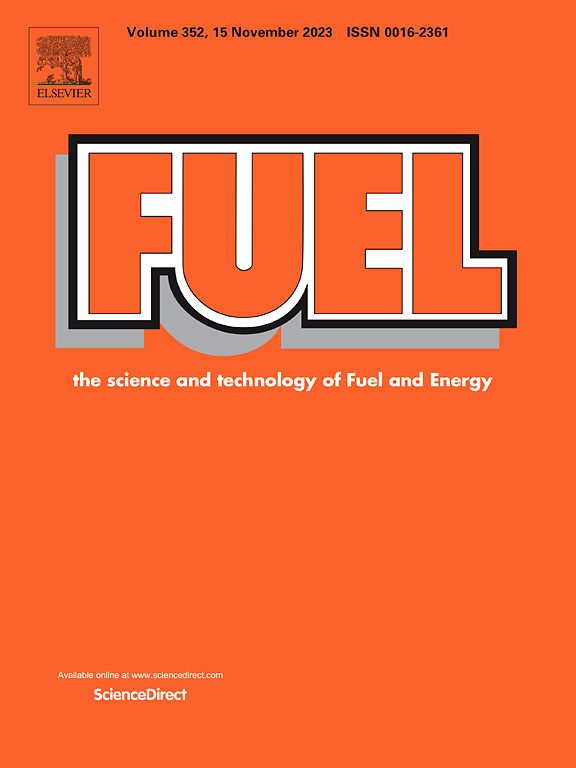真空紫外光/氧酮/H2O2氧化系统去除烟气中的SO2和NO
IF 7.5
1区 工程技术
Q2 ENERGY & FUELS
引用次数: 0
摘要
为实现模拟烟气中NO和SO2的氧化脱除,研制了真空紫外光(VUV)/Oxone/H2O2氧化系统。结果表明,所建立的VUV/Oxone/H2O2氧化体系对NO的去除能力明显强于VUV/Oxone氧化体系。双氧化剂之间的协同作用导致自由基产量显著增加,从而加强了NO的去除。VUV/Oxone/H2O2氧化系统实现了高脱硝脱硫效率(NO去除率为95.5%,SO2去除率为100%)。在185nm波长下,该体系对NO的去除效果最好。增加光照强度、H2O2浓度和Oxone浓度均能显著促进NO的去除。温度升高对NO的去除率先升高后降低。较高的Oxone/H2O2溶液pH值对NO的去除有不利影响。羟基自由基氧化、硫酸盐自由基氧化、氧原子/臭氧氧化、VUV直接光解和过氧化物氧化等5种脱除途径是NO脱除的主要途径。其中羟基自由基氧化对NO的去除起关键作用,硫酸盐自由基/氧原子/臭氧氧化对NO的去除起次关键作用。吸附动力学研究表明,在VUV/Oxone/H2O2氧化体系中,NO的氧化去除过程处于快速动力学区。本文章由计算机程序翻译,如有差异,请以英文原文为准。

Removal of SO2 and NO in flue gas using a vacuum ultraviolet light/Oxone/H2O2 oxidation system
In this article, a vacuum ultraviolet light (VUV)/Oxone/H2O2 oxidation system was developed to realize the oxidation removal of NO and SO2 in simulated flue gas stream. Results show that the developed VUV/Oxone/H2O2 oxidation system shows much stronger NO removal ability than VUV/Oxone oxidation system. The synergistic effect between dual oxidants leads to a significant rise in the yield of free radicals, thus strengthening the removal of NO. The VUV/Oxone/H2O2 oxidation system realizes a high denitration and desulfurization efficiency (95.5 % for NO and 100 % for SO2). 185 nm wavelength realizes the best NO removal effect in this system. The increase of light intensity, H2O2 concentration and Oxone concentration can significantly promote NO removal. Increasing temperature leads to an initial increase and then a decrease in NO removal efficiency. Higher Oxone/H2O2 solution pH value has an adverse impact on NO removal. Five removal pathways, such as oxidation by hydroxyl radical, oxidation by sulfate radical, oxidation by oxygen atom/ozone, direct photolysis by VUV, and oxidation by peroxides, are responsible for NO removal. Among them, oxidation by hydroxyl radical plays a critical role, and oxidation by sulfate radical/oxygen atom/ozone plays a second critical role in NO removal. Absorption kinetics study shows that the oxidation removal process of NO in the VUV/Oxone/H2O2 oxidation system is within a fast kinetic region.
求助全文
通过发布文献求助,成功后即可免费获取论文全文。
去求助
来源期刊

Fuel
工程技术-工程:化工
CiteScore
12.80
自引率
20.30%
发文量
3506
审稿时长
64 days
期刊介绍:
The exploration of energy sources remains a critical matter of study. For the past nine decades, fuel has consistently held the forefront in primary research efforts within the field of energy science. This area of investigation encompasses a wide range of subjects, with a particular emphasis on emerging concerns like environmental factors and pollution.
 求助内容:
求助内容: 应助结果提醒方式:
应助结果提醒方式:


